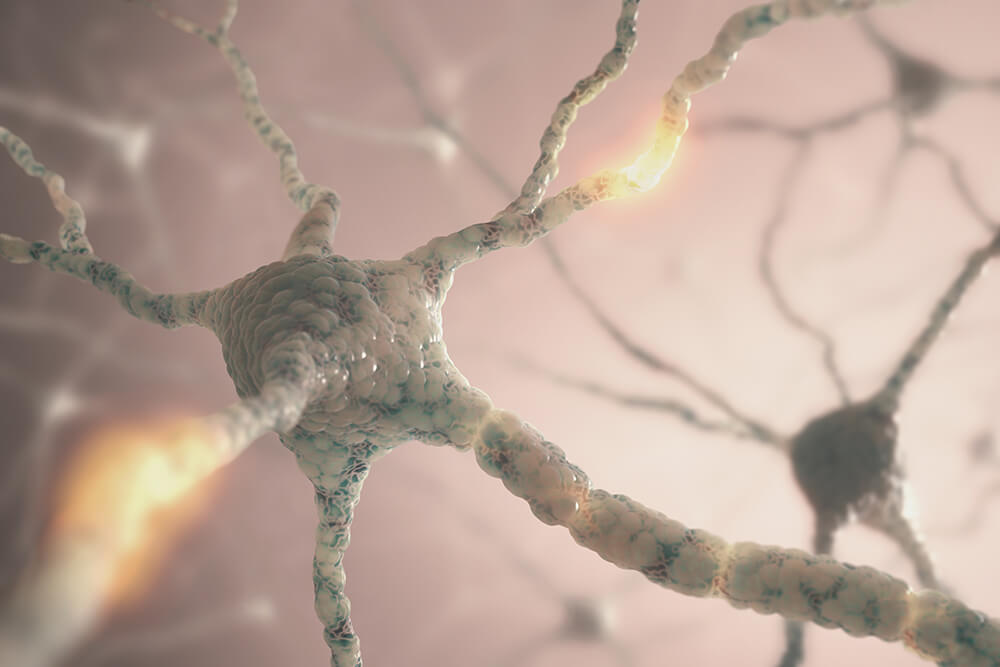Introduction
When most people think of DMT, if they think of DMT at all, the first thing to come to mind is probably intense psychedelic imagery and perhaps bizarre encounters with aliens or other entities. However, the future of DMT in mainstream culture may soon include breakthrough treatments for neurodegenerative diseases and injuries like traumatic brain injury (TBI) or stroke. DMT is currently showing very promising results in many studies for its potential neuroprotective properties. As scientists delve deeper into the compound’s effects, the focus is shifting from its psychedelic nature to its potential therapeutic applications in safeguarding neurons and promoting brain health.

N,N-Dimethyltryptamine (DMT) is a naturally occurring psychedelic compound that has captured the interest of scientists due to its potential therapeutic benefits. Its unique ability to induce intense but short-lived hallucinogenic experiences is well-known, but recent research suggests that DMT may also have neuroprotective properties.
In the realm of neuroscience, neuroprotection involves strategies to safeguard the health of neurons, the building blocks of the brain and nervous system. Neurons are vulnerable to various damaging factors, such as oxidative stress and inflammation, which can lead to their deterioration and death, often seen in neurodegenerative diseases like Alzheimer’s and Parkinson’s.
DMT’s neuroprotective potential stems from its interaction with a protein called the sigma-1 receptor, found in the brain and other tissues. This receptor plays an active role in neuronal survival, inflammation control, and plasticity regulation, critical for neurons’ adaptability and resilience.
Through its binding to the sigma-1 receptor, DMT activates a series of events that fortify neuronal defenses against damage. This activation empowers the receptor to protect neurons from oxidative stress and excitotoxicity, which are harmful processes linked to neurodegeneration. While these findings are promising, it’s essential to conduct thorough human studies to understand DMT’s true potential as a neuroprotective agent.

DMT and the Sigma-1 Receptor
Neuroplasticity, the brain’s capacity to adapt and change in response to the environment, is a fundamental aspect of the nervous system. DMT has shown the potential to influence neuroplasticity, facilitating changes in neurons’ connections and behavior in response to new information. This may involve forming new synapses, strengthening existing ones, and even promoting the growth of new neurons, crucial for repairing damaged neurons and enhancing brain function.
Binding to the sigma-1 receptor, DMT might foster synaptic plasticity, a microscopic process underlying learning and memory. By strengthening neural connections, DMT could enhance learning capabilities. Additionally, DMT might promote neurogenesis, the birth of new neurons, which could replace damaged ones or integrate into existing circuits, benefiting neurodegenerative conditions.
The ability of DMT to induce neuroplasticity suggests exciting therapeutic possibilities in treating neurodegenerative diseases, where the progressive loss of neuronal function occurs. However, further research is essential to validate these findings in humans and explore safe and effective dosing and potential side effects.
Neuroplasticity and DMT
While animal studies have shown promising results regarding DMT’s neuroprotective effects, these findings need confirmation in human trials. Oxidative stress and excitotoxicity are processes that damage neurons, and DMT has demonstrated potential in protecting against them in laboratory settings. However, these studies don’t provide conclusive evidence yet for human use.
Animal Studies on DMT’s Neuroprotective Properties
The therapeutic potential of DMT for neurodegenerative diseases is a promising area of research. DMT’s binding to the sigma-1 receptor, which plays a role in neuroprotection, is a significant factor in its effects. Animal studies have supported DMT’s ability to protect neurons from damage caused by oxidative stress and excitotoxicity, but human trials are needed to truly confirm these findings.

Delivery Methods
In a medical setting, DMT is administered either as an intramuscular injection or through an intravenous (IV) infusion. Outside of a medical environment, DMT is commonly consumed through smoking or as an ingredient in the traditional Amazonian brew, ayahuasca. However, at Eleusinia Retreat, we have adopted a different approach, dissolving the pure DMT crystals into a liquid to be vaporized. We find this vaping method preferable as it grants individuals greater control over the rate of delivery, allowing for a more personalized and comfortable psychedelic experience.

Conclusion
While research on DMT’s potential neuroprotective benefits is ongoing, other aspects, such as ethical, legal, and societal implications, also require consideration. If DMT is to be used therapeutically, a new model of care is necessary, integrating psychedelic experiences into a comprehensive therapeutic framework with psychological support.
Despite the challenges ahead, the potential neuroprotective effects of DMT present exciting prospects. The journey involves further scientific exploration and navigating complex challenges, offering an opportunity to reshape perceptions of psychedelic substances and discover new pathways to healing and understanding.






6 Responses
Excellent article – very informative. Keep them coming.
I have an insatiable thirst for knowledge on all things psychedelic. Thank you Tyler Strause for another very interesting article.
Thank you for your comment. It means a lot to me.
Thank you Tyler, well explained, exiting and full of hope. DMT was my favorite journey at Eleusinia it feels so good to learn the amazing benefits on our neurons. Thank you
Very informative. I enjoyed learning more about DMT. Well written article.
This is a very informative article. I learned more about DMT. Some day the legal issues will be worked out for those using it for the benefit of those that may have a better understanding of their journey.